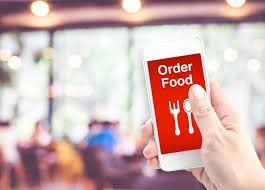Are you looking for a way to increase revenue for your F&B business? You may have already known that online food ordering is very popular these days.
However, jumping onto online food ordering platforms is not enough. There is still work to do.
How to turn online food ordering into a profitable business channel?
In an industry where consumers are spoilt with choices, you are always striving to make your presence felt.
Therefore, we are offering you some tips to help you generate more revenue through your online food ordering solution.
Start with a reliable online food ordering solution provider
Getting started with a reliable online food ordering system is more important than you would expect.
Online food ordering is a lucrative business channel, and you will not want to be missing out orders, or worry about it breaking down during your peak hours.
iMakan Online Ordering Solution provides all customers with the most reliable online food ordering platform that helps you focus on the important part. Food service quality.
Social Media Marketing
Paid advertisements on Facebook and Instagram may be a great way to start. However, Facebook and Instagram limits your reach.
Another way to market on social media is to join food groups to promote your business. Make interactive videos and images. Recommend your best sellers, and most importantly, post the link to your online food ordering platform to direct your customers to your ordering page.
Email Marketing
This is one of the cheapest and most effective to reach out to your customers.
Send emails to your customers in your customer database. Notify them of your latest promotions and new online food ordering platform where they can pre order meals and have it delivered islandwide.
Paid advertising
➼ Digital display advertising - These advertisements will show up as images featuring your online food ordering, even when consumers are not actively searching for your F&B business. You will only be charged when a consumer clicked on your advertisement.
➼ Print media, television and radio - These are very effective ways to get in front of your customers if you have additional budget.
➼ Digital prints and flyer distribution - One of the oldest marketing methods in the book. Distribute or send out flyers during your free time to promote your new online food ordering platform, which brings much convenience to your customers.
Need help in getting started?
Contact us by dropping us a request below, to find out how iMakan can provide you with a reliable online ordering solution, and help you in your marketing efforts!












